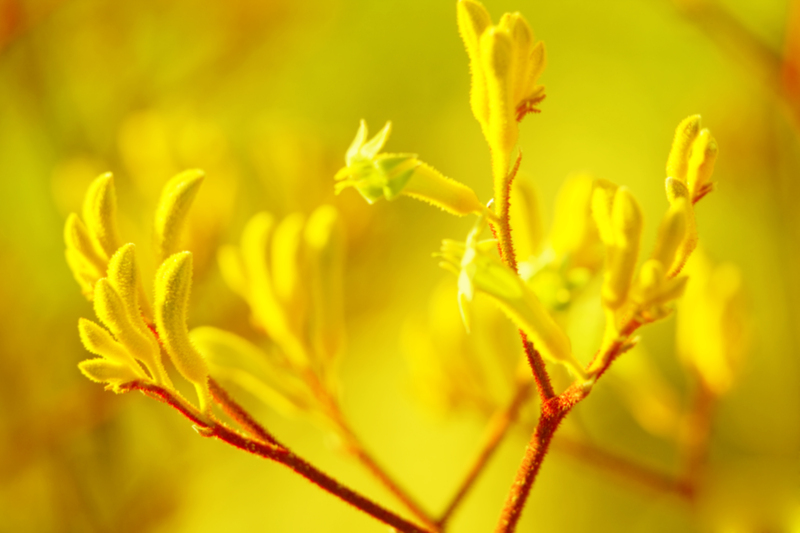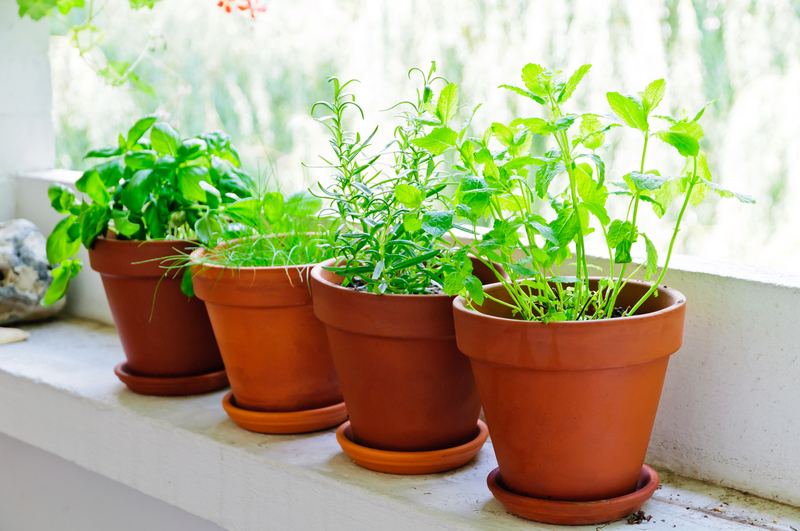Designing a Fun and Safe Garden Oasis for Kids
Posted on 10/06/2025
Designing a Fun and Safe Garden Oasis for Kids: The Ultimate Guide for Parents
Every parent wants their outdoor space to be a place where children can explore, play, and learn amidst nature's wonders. However, creating a fun and safe garden environment for kids is as much about creativity as it is about safety. Designing a kid-friendly garden doesn't only mean installing playground equipment--it involves thoughtful landscaping, ensuring child safety, and fostering an area where young imaginations can thrive. In this comprehensive guide, you'll find everything you need to transform your backyard into a magical, secure sanctuary for your kids.

Why Designing a Garden Oasis for Kids Is Important
Outdoor play is essential for a child's development. Not only does it encourage physical activity and exercise, but it also enhances cognitive skills, encourages social interaction, and increases their appreciation for nature. When you design a garden retreat for children, you're gifting them a venue to connect with the natural world, develop motor skills, and create lasting memories--all while ensuring they remain safe and protected.
Planning Your Kid's Garden Oasis: Key Elements to Consider
Assessing Your Space
- Evaluate the Size: Analyze your available outdoor space. Small yards can be just as vibrant as larger ones.
- Check for Hazards: Before you start, assess your garden for any potential hazards like sharp tools, poisonous plants, or open water sources.
- Sun & Shade: Notice where the sun hits your garden throughout the day to appropriately place play areas and seating.
Understanding Your Child's Needs
- Age Appropriateness: Design elements that match your child's age, interests, and developmental stage.
- Inclusive Play: Ensure your garden accommodates children with different abilities for all-inclusive playtime.
Garden Design Ideas for Creating an Entertaining and Secure Space
1. Safe Play Zones
The heart of any kid-friendly garden oasis is a designated play zone. These spaces can feature:
- Playhouses or forts for imaginative adventures.
- Swings and slides with soft surfacing (like mulch, rubber, or grass) underneath to cushion falls.
- A sandpit or mud kitchen for tactile fun and creativity.
Always position play zones away from driveways and ensure they're visible from the house for supervision.
2. Soft, Secure Surfaces
Surface material selection is crucial when designing a safe garden play area for children. Hard surfaces like concrete can pose tripping hazards and injuries. Ideal options include:
- Artificial grass: Soft, low maintenance, and gentle on knees.
- Bark chippings or wood mulch: Natural, safe, and shock-absorbent.
- Rubber matting: Provides fantastic cushioning for high-energy play.
3. Child-Safe Planting Choices
Plant selection is pivotal in your garden design for children. Avoid toxic or prickly plants and instead opt for:
- Edible herbs and vegetables: Encourage gardening and healthy eating.
- Sunflowers and sensory plants: Stimulate smell, sight, and touch.
- Ground cover plants to cushion stumbles and provide softness underfoot.
Always research plants before making choices. Some seemingly harmless plants can be toxic if ingested or cause skin irritation.
4. Inviting Nature In
Cultivate a natural oasis for kids by introducing wildlife-friendly features. An engaging wildlife garden can include:
- Bird feeders and baths for bird-watching.
- Bug hotels and log piles for insect exploration.
- Butterfly and bee-attracting flowers for pollinator-friendly play.
These touches connect children to ecology, teaching them about local species and environmental responsibility.
Ensuring Maximum Safety in Your Children's Garden Oasis
Kid-Proof Fencing and Gates
The first layer of garden safety for kids is proper fencing. Use fences high enough to deter climbing and secure self-closing, child-proof gates.
Removing or Covering Hazards
- Lock away gardening tools, chemicals, and fertilizers in a secure shed.
- Cover or remove water features such as ponds, fountains, or pools unless supervised actively.
- Remove poisonous or thorny plants via regular checks.
Non-Toxic Materials and Finishes
- Choose paints, sealants, and materials labeled non-toxic and child-safe.
- Opt for smooth-edged furniture and avoid sharp or rust-prone fixtures.
Sun and Weather Protection
- Plant fast-growing shade trees or erect sails, pergolas, or umbrellas to provide respite from the sun.
- Arrange a weather-protected seating area for both kids and parents.
Tip: Teach children the importance of sun safety: frequent hydration, wearing hats, and applying sunscreen while playing outside.
Inspirational Play Features to Spark Creativity
1. Sensory Paths and Trail Designs
A sensory path can guide kids through different textures and sensations--think smooth pebbles, crunchy leaves, bouncy grass, and warm stepping stones.
2. DIY Art and Craft Corners
Set up an outdoor art space with chalkboards, paint easels, or pottery for hours of creative fun.
3. Secret Garden Nooks
Use vertical planters, trellis tunnels, or willow domes to create mini hideouts--magical spaces where children can play quietly or read their favorite books.
4. Adventure Trails and Obstacle Courses
Lay out stepping logs, balance beams, or a low rope course for children to test their balance and agility--all made from natural, safe materials.
5. Mini Vegetable Patches
Engaging children in gardening activities cultivates responsibility, patience, and an appreciation of healthy foods. Assign your kids their very own raised bed or a few pots to tend.
Interactive Garden Elements: Learning and Playing Combined
Water Play Without the Risks
- Water tables with tight-fitting lids minimize drowning hazards.
- Misting sprinklers offer a safe way for kids to cool off on hot days.
Edible Gardens and Sensory Learning
- Plant easy-to-grow edibles like strawberries, cherry tomatoes, and snap peas.
- Add herbs like mint and lavender for exploration through smell and taste.
Wildlife Watching Stations
- Install simple wooden benches or upcycled stumps in quiet corners for wildlife observation.
- Enhance learning with bird identification books and bug magnifiers on hand.
Combining play and learning in your children's backyard oasis creates a multifunctional space that supports social, cognitive, and sensory development.
Low-Maintenance Tips for Busy Parents
- Select hardy, low-care plants: Native varieties require less water and management.
- Install drip irrigation: Automated watering keeps your garden hydrated with minimal effort.
- Mulch garden beds: Mulching reduces weeds and keeps soil moist for longer.
- Use raised beds or containers: Limit weeding and make plant care more manageable for kids.
Encouraging Safe, Independent Play
The goal of designing a children's garden oasis is to allow safe independence. Teach garden rules early, from not eating unfamiliar plants to staying within boundaries.
Place key play areas where they're visible from your main living areas, so you can keep an eye on young ones while they explore.
Garden Oasis Maintenance and Safety Checklist
- Regularly inspect play equipment for loose screws, splinters, or wear.
- Rake mulch or safety surfaces to an even depth for optimal cushioning.
- Remove fallen branches or debris from play areas.
- Check for and address pest hazards like wasp nests or poison ivy.
- Replace broken fences or gates immediately to maintain garden security.

Involving Kids in Garden Design and Upkeep
Children love to feel valued and responsible within the family space. Let them help choose flowers, paint planters, or decide where to put the playhouse. This investment of effort encourages respect for their space and ensures the garden remains a rewarding, engaging oasis.
Conclusion: Transforming Your Garden into a Playful, Safe Oasis for Kids
Designing a fun and safe garden oasis for kids is about balancing excitement with security. With thoughtful planning, you can create a vibrant, kid-friendly garden sanctuary that fosters learning, physical activity, and creativity--all in a protected environment. Remember, the best backyard oasis grows and evolves with your children--so refresh, adapt, and enjoy watching your little ones flourish in their own piece of nature.
Ready to begin? Use these tips to start your family's garden adventure and make your backyard a destination your children will cherish for years to come.



